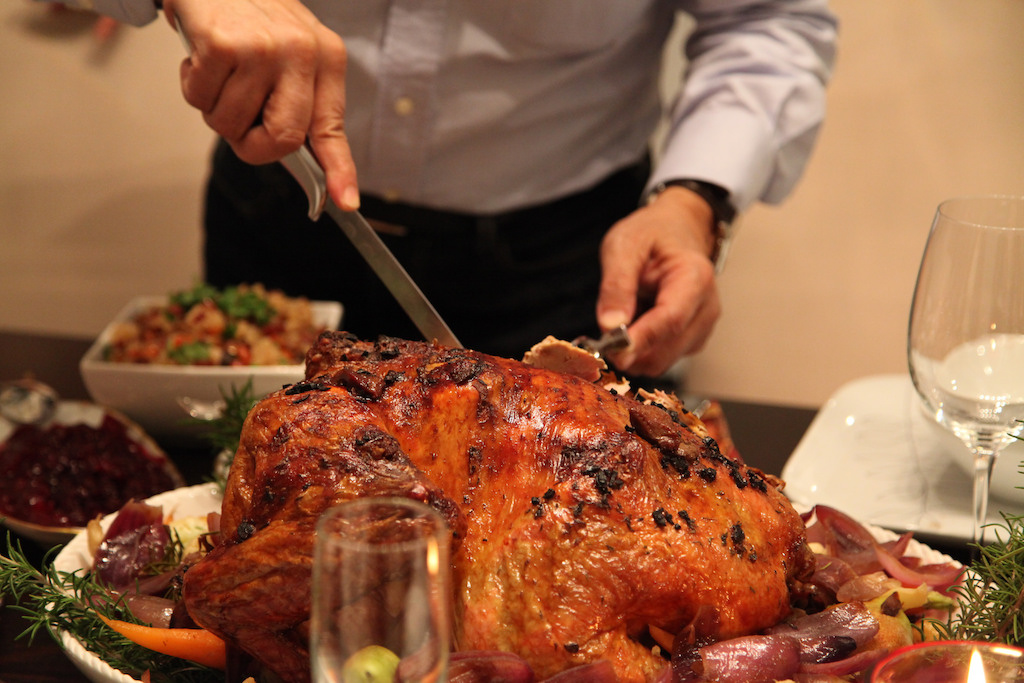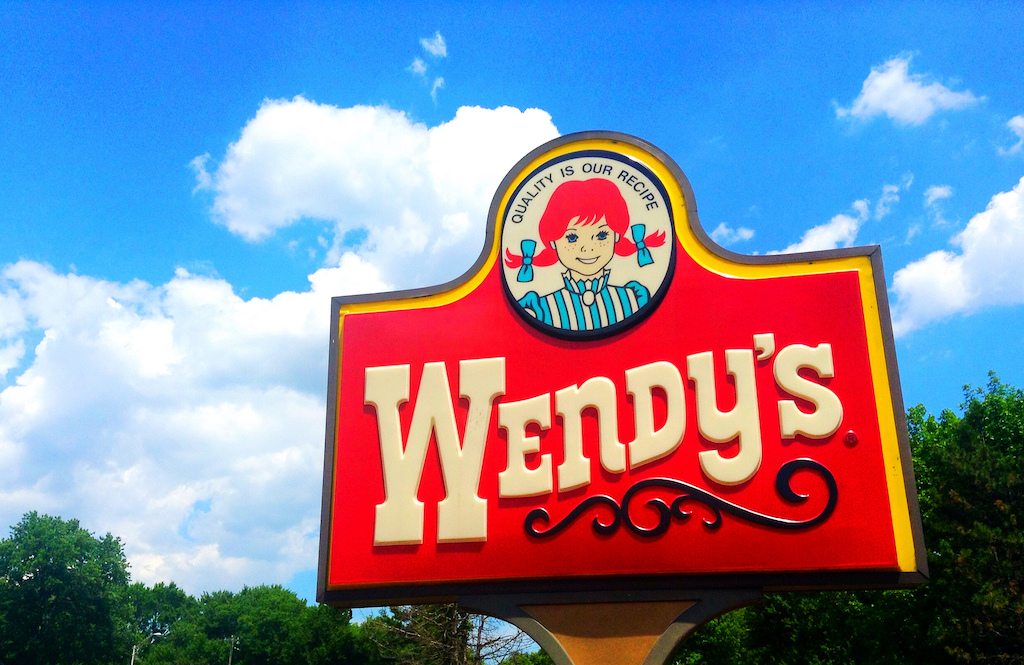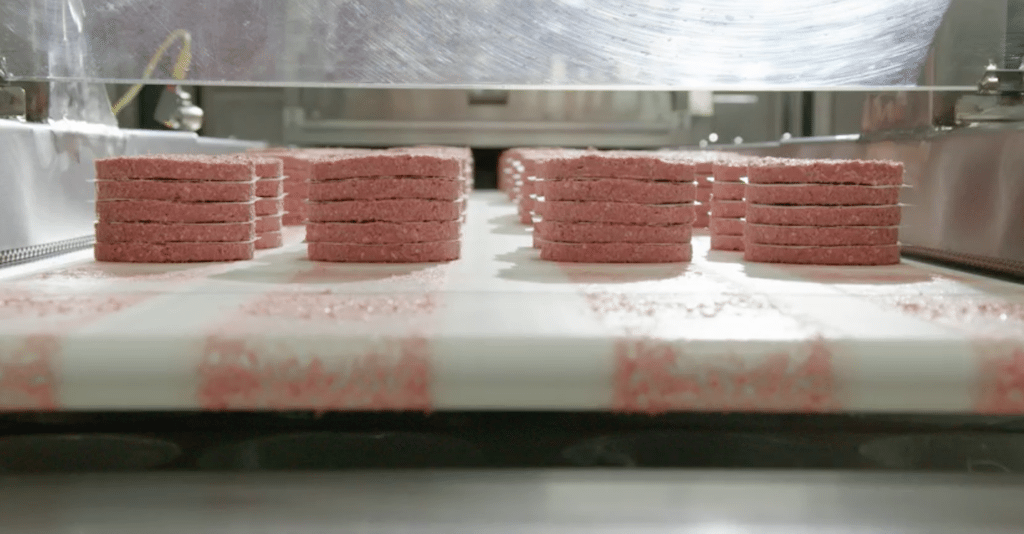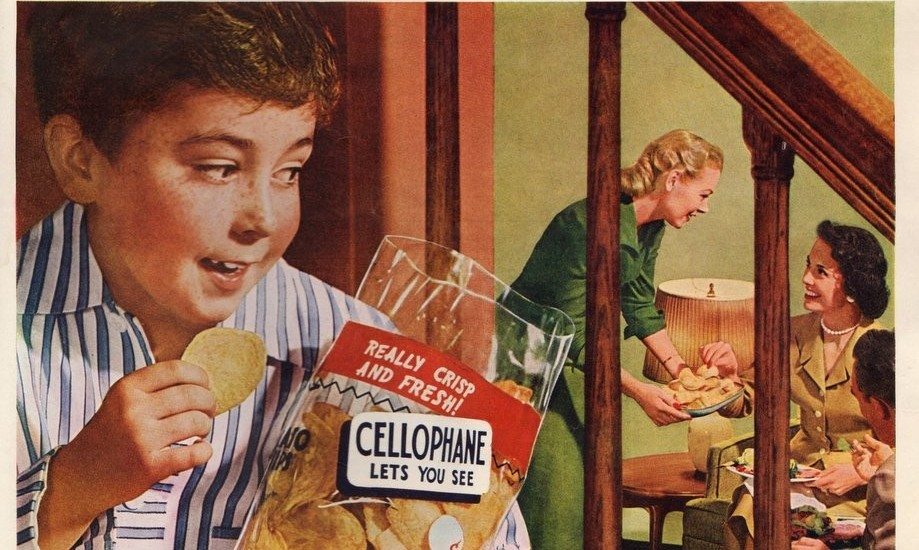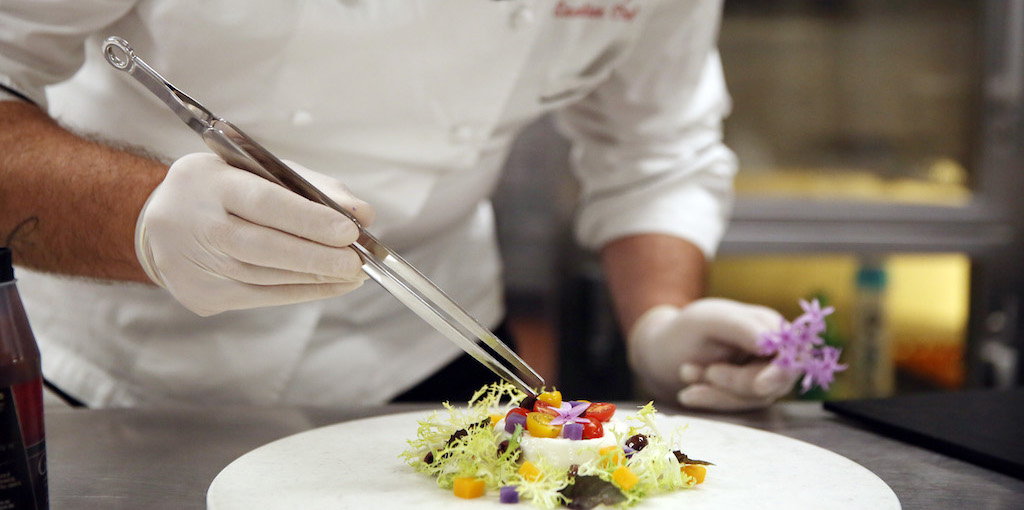
Courtesy of the Beverly Hilton
On Sunday, 23 shiny Golden Globe statues, meant to award achievements in television and film, will be handed out by the Hollywood Foreign Press Association in a 3-hour ceremony in the Beverly Hilton ballroom. It’s the 75th edition of the awards show heard ‘round the world: the first red carpet walk of the year—the first in a string of red carpet walks—for 1,300 of the country’s most lauded entertainment professionals.
The Hollywood Foreign Correspondents first established the Golden Globe Award in 1944. And what started as a “casual luncheon” has since morphed into a scene-y, multi-course, seated meal. Unlike the Academy Awards, which hosts its audience of nominees and guests in rows facing the stage, the Golden Globes are hosted dinner theater-style. Those in attendance are seated around tables, where winners are visible to the television audience and can be seen hurriedly putting down their champagne glasses before walking to the stage to collect their prize.
And while the ceremony may be three hours of tearful, anxious glamour for attendees, for chef, prep staff, and servers, the whole thing is basically one giant—if also somewhat disappointing—catering gig.
“You put 1,500 salads out and maybe 700 come back up, and then hardly anybody eats the entrees,” says Chef Troy Thompson, executive chef for the 73rd-annual celebration. “But you got to put them out just in case someone does.” And then, he says, all the desserts come back.
For Thompson, the 2016 ceremony was a robust 18 hours of preparing, cooking, transporting, and serving a high-class meal to more than a thousand celebrity guests—most of whom wouldn’t end up even touching their plates. To correspond with the 8 p.m., EST television broadcast, dinner has to be served at 3:30 p.m., PST. And Thompson says the night concludes sometime around 3 a.m., after the after-parties—during which, he says, communication becomes fraught and can lead to errors that poorly reflect on the kitchen.
 Courtesy of the Beverly Hilton
Courtesy of the Beverly Hilton “Hardly anybody eats the entrees,” says Chef Troy Thompson, executive chef for the 73rd-annual Golden Globes celebration
Thankfully he could only cite one tiny mishap at an HBO after-party: “We showed up to the ballroom but couldn’t cook anything there.”
Apart from the general feats of coordination a big gig like the Globes demands, some of the more complicated logistics are interpersonal. As is often true for chefs and servers working a high-profile event, there are two conflicting captains at the helm: the foodservice staff and the party planners. They (and their interests) are not one and the same. Thompson says that the planners force a lot of high-stakes accountability for things that go wrong onto those working behind the scenes, even if the kitchen staff doesn’t know who exactly they are speaking to.
“They [party planners] pay a lot of money and … it’s one of those things where they want to catch something wrong and they want to complain about it. And they want to get as much of their money back as they can. And that’s the business … you don’t even know who these people are and they’re going off the wall and you know, you learn from all those things too.”
Thankfully, those responsible for getting the right number of plates to the right people—at the right tables, and at the right time—are in the right place to do so. The Beverly Hilton is known as a “production hotel,” which means it’s especially skilled at putting on a big to-do and well-suited to accommodate thousands of guests, hundreds of staff, and lots of interpersonal politics.
“The Beverly Hilton is the production hotel. You could throw a game show … because that’s the type of hotel that they created in the ballroom. There are very few hotels in Los Angeles that could accommodate that type of need for space. It has a ballroom that fits 1,500 people. Another three or four other ballrooms that fit, three, four, five, six hundred people. Then the hotel functions differently than it would any other day. We’re plating up in the employee cafeteria, so the employee cafeteria becomes something else. We got to get things running smoothly in other places, like the garage. So it’s a huge operation.”
It makes sense that the Beverly Hilton, which spreads out over 9 acres and has hosted the ceremony since 1961, would want more than just a nod to tradition in its events. That’s perhaps why the Globes persist in the folly that is dinner, considering how little of it seems to be eaten before the show.
But Thompson says that classic formality is part of the experience attendees expect. “I think people, when they go to events—whether it’s the Oscars, the Emmys, the Tonys, whatever—you have a dinner and a show. It’s also for the people that are coming to this. So it has to be, you know, one of those regimented, orchestrated type events.”
Much like the stagehands and production assistants who keep a show moving as scripted, the executive chef has to be everywhere at once. And the job gets more complicated as the night progresses. Once the show itself is over in the International Ballroom, the celebration continues, ballooning out into the other hotel ballrooms, where after-parties are hosted by HBO, Amazon, NBC, and other major production studios.
The heart of this operation? Tradition. The legacy of an awards ceremony like the Golden Globes, the pressure of timing it properly to the televised broadcast, and, above all, the prestige of the Beverly Hilton, yields heightened expectations, and everyone working—in the kitchen especially—operates under the philosophy that “It has to go flawlessly.”
“You make the hotel look good and in return, the hotel that makes you look good. Making sure that everything goes out flawlessly and with the right timing is essential. It’s a production. It takes what it takes to execute an orchestra or Cirque du Soleil,” says Thompson. And while a peek into kitchen operation may be fun, we know you really want to know about the food. Popular dietary restrictions don’t detract from decadence when it comes to the creating this year’s meal.
Chef Alberico Nunziata, current executive chef for the Beverly Hilton, has created an entirely gluten-free course that including various “golden” food items to connect the shiny trophy’s shimmer to the plate. In his second year as the executive for the Golden Globes, Chef Nunziata’s flair for Italian cuisine will provide a familiar taste for the last awards attendees. Well, at least the few who busy themselves with dinner.
 Courtesy of Beverly Hilton
Courtesy of Beverly Hilton
Hey, Hollywood! If you’re not going to eat that, can we have some?


